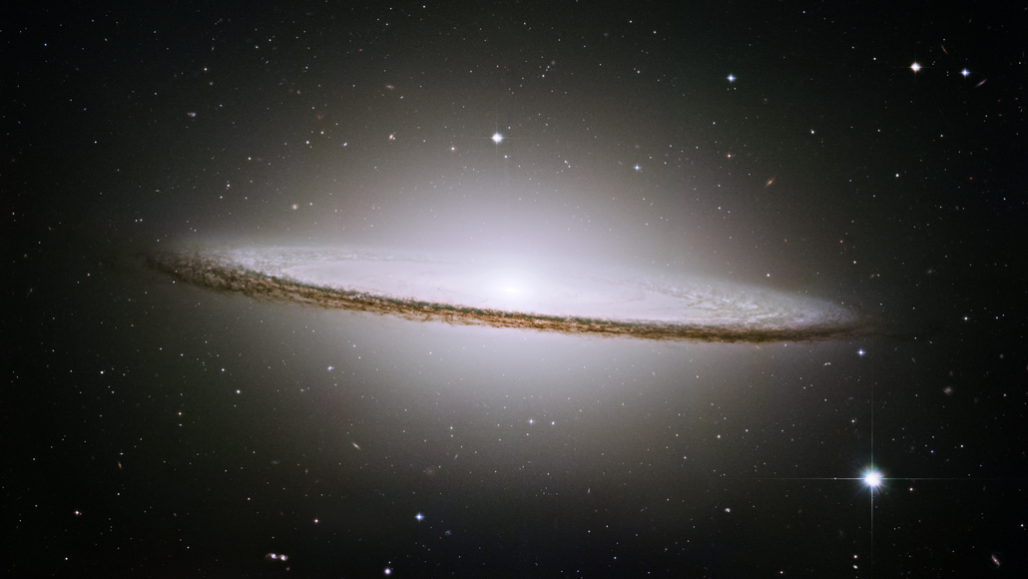This ‘Sombrero’ stole a big galaxy
The thievery appears to explain why the stunning Sombrero Galaxy is so amazingly bright

This Sombrero Galaxy is the most luminous galaxy within 35 million light-years of Earth.
NASA/ESA and The Hubble Heritage Team (STScI/AURA)
By Ken Croswell
The brightest galaxy near Earth may owe its shine to a past smashup with a really big galaxy. That’s the upshot of a new study of stars found on the outskirts of the Sombrero Galaxy.
The Sombrero Galaxy is some 31 million light-years away. That means it takes the light from its many, many stars about 31 million years to reach us. This galaxy emits more light than any other galaxy within 35 million light-years of Earth. For perspective, it is two to three times brighter than our galaxy, the Milky Way. And the Milky Way itself is much brighter than most other galaxies.
The Sombrero observations are “really beautiful,” says Eric Bell. He’s an astronomer at the University of Michigan in Ann Arbor. He was not part of the new study. Bell says the new data suggest the Sombrero Galaxy is unique. “We don’t see any other galaxy like it,” he explains.
Both the Sombrero and the Milky Way are giant spirals. Many of the stars in a giant spiral galaxy lie in the same plane. They make up what’s known as the galaxy’s disk. In fact, we live in the Milky Way’s disk. But a halo of additional stars surrounds that disk.
Many stars in such a halo came from other galaxies that strayed too close. The giant spiral galaxy tore the approaching galaxies apart. The stars it captured then began orbiting the spiral galaxy. They ended up becoming part of the halo.
Roger Cohen and Paul Goudfrooij are astronomers at the Space Telescope Science Institute in Baltimore, Md. They studied the Sombrero’s halo of stars with the Hubble Space Telescope. Their team is due to publish its findings soon in the Astrophysical Journal.
Our Milky Way also is a thief. It has its own share of halo stars. These stars have little iron compared to hydrogen (the most common element in the universe). The ratio of iron to hydrogen in a typical halo star in our galaxy is, by comparison, only a few percent as high as that same ratio for our sun. That means the Milky Way’s stellar halo came from consuming small galaxies, because they have little iron. In contrast, stars making up the Sombrero’s stellar halo are rich in metals. “We were fairly surprised,” Cohen says. His team studied the Sombrero’s halo by looking at stars far above the galaxy’s disk. Most of the halo stars have iron-to-hydrogen ratios almost as high as our sun’s. In fact, that halo hosts almost no iron-poor stars. This suggests the Sombrero Galaxy got most of its stellar halo from one or more big galaxies.
Large galaxies have more iron because they have more stars, which make iron. Plus, large galaxies have enough gravity to hold on to the iron a star shoots into them when it explodes as a supernova.
Indeed, no one has ever seen a spiral galaxy whose stellar halo is so iron-rich. And that may explain why the Sombrero Galaxy is so bright. It likely formed when two or more big galaxies hit one another several billion years ago. The big galaxies merged to make the greatest galaxy in our cosmic neighborhood.
Something like that is in our future, too. In about 5 billion years, the Milky Way will hit the Andromeda Galaxy. That’s another giant spiral galaxy near us. Both galaxies are already very bright. But when they join forces, they will be still brighter. They may even outshine the Sombrero Galaxy.







